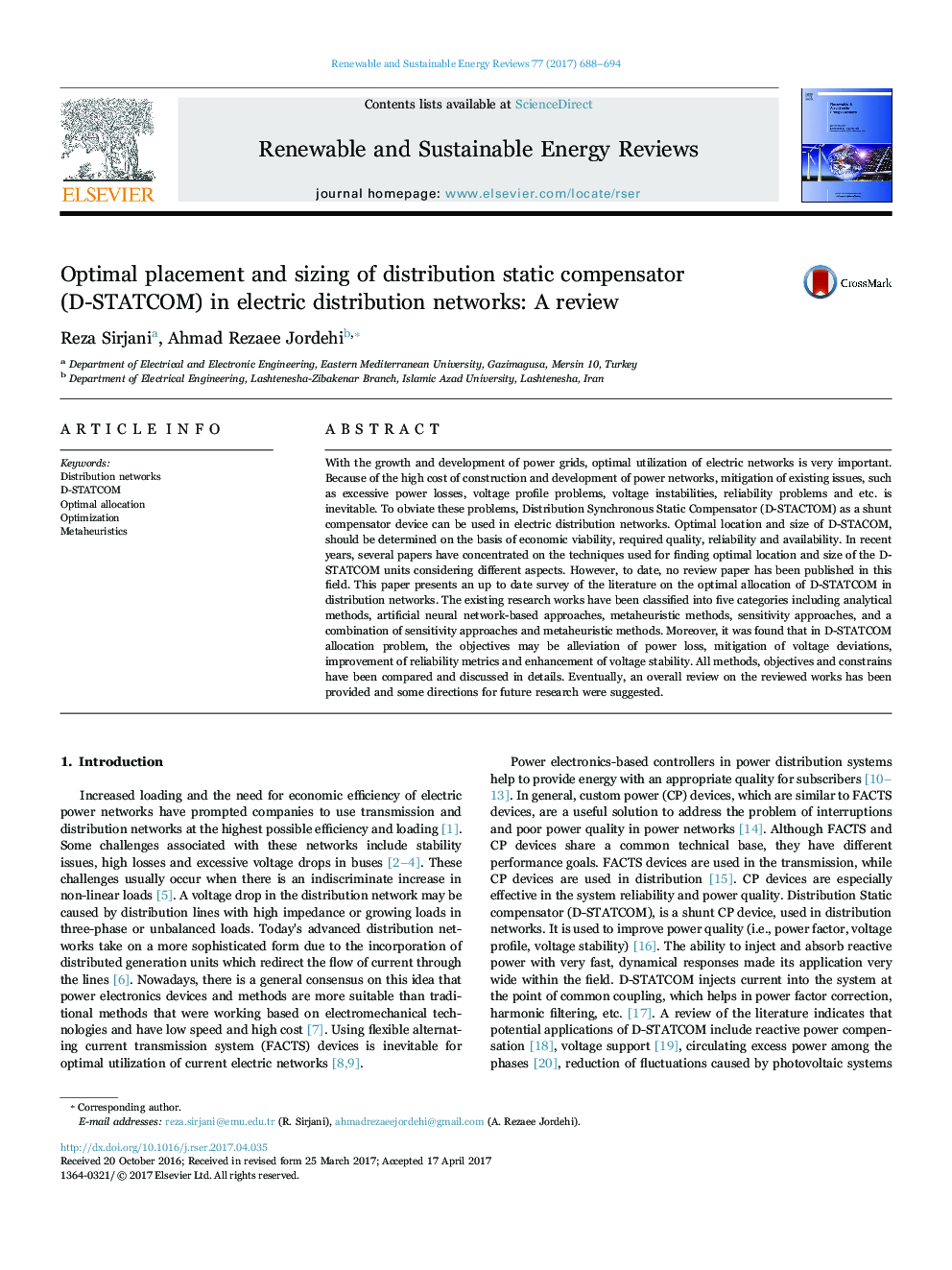| Article ID | Journal | Published Year | Pages | File Type |
|---|---|---|---|---|
| 5482970 | Renewable and Sustainable Energy Reviews | 2017 | 7 Pages |
Abstract
With the growth and development of power grids, optimal utilization of electric networks is very important. Because of the high cost of construction and development of power networks, mitigation of existing issues, such as excessive power losses, voltage profile problems, voltage instabilities, reliability problems and etc. is inevitable. To obviate these problems, Distribution Synchronous Static Compensator (D-STACTOM) as a shunt compensator device can be used in electric distribution networks. Optimal location and size of D-STACOM, should be determined on the basis of economic viability, required quality, reliability and availability. In recent years, several papers have concentrated on the techniques used for finding optimal location and size of the D-STATCOM units considering different aspects. However, to date, no review paper has been published in this field. This paper presents an up to date survey of the literature on the optimal allocation of D-STATCOM in distribution networks. The existing research works have been classified into five categories including analytical methods, artificial neural network-based approaches, metaheuristic methods, sensitivity approaches, and a combination of sensitivity approaches and metaheuristic methods. Moreover, it was found that in D-STATCOM allocation problem, the objectives may be alleviation of power loss, mitigation of voltage deviations, improvement of reliability metrics and enhancement of voltage stability. All methods, objectives and constrains have been compared and discussed in details. Eventually, an overall review on the reviewed works has been provided and some directions for future research were suggested.
Related Topics
Physical Sciences and Engineering
Energy
Renewable Energy, Sustainability and the Environment
Authors
Reza Sirjani, Ahmad Rezaee Jordehi,
